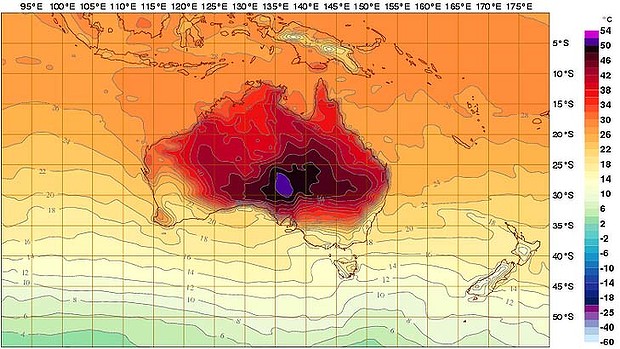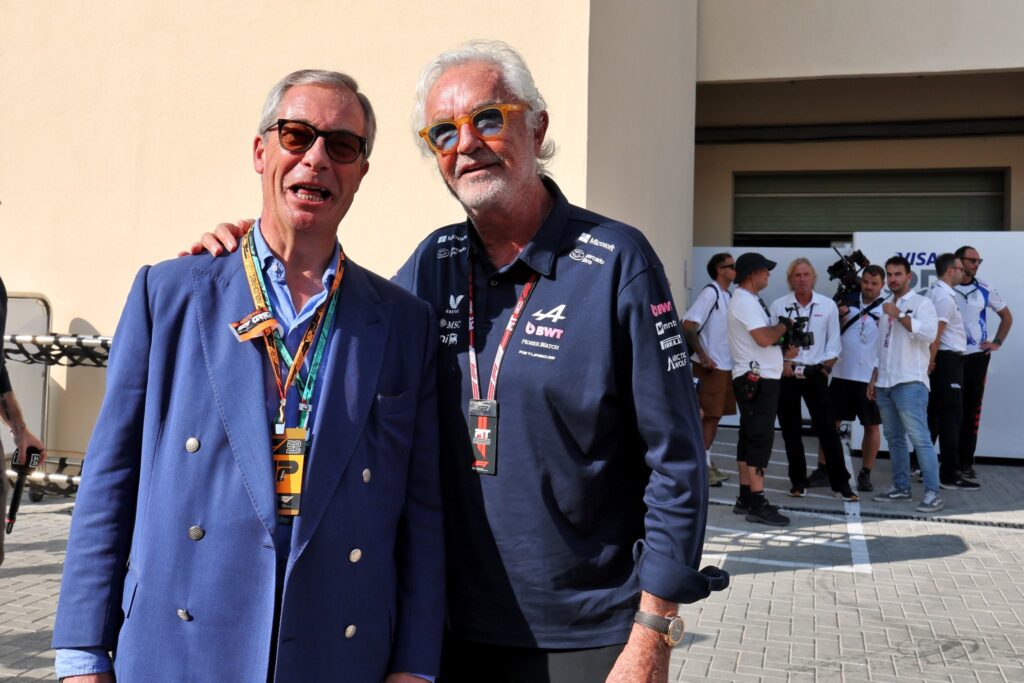AUSTRALIA is baking in a heatwave which has broken all historical records for its geographical size and sheer number of extremes.
For seven days straight, the country’s average maximum temperature has been above 39C (102F), beating a previous run of just four days of such temperatures set back in 1973.
The country’s Bureau of Meteorology has issued a special statement outlining the unprecedented heat event and some of the records broken
Australia set a new record for the highest national area-average temperature, recording 40.33 °C (104F) and surpassing the previous record set on 21 December 1972 (40.17 °C). To date (data up to the 7 January 2013) the national area-average for each of the first 7 days of 2013 has been in the top 20 hottest days on record, with 6 January the fifth hottest on record and the first time 6 consecutive days over 39 °C (102F) has ever been recorded for Australia.
So hot have been the temperatures, that BoM was forced to add extra colours to its forecast maps so they could show temperatures beyond 52C (125F). Deep purple is no longer just a 1960s heavy rock band, but is now also a colour that beckons 54C (129F).
On consecutive days the country beat its previous daily mean temperature record, which had stood since 1972, with 32.36C (90F) set on 8 January.
Hobart in Tasmania reached 41.8C (107F), its hottest day by a full degree in a record going back 120 years. Eucla in Western Australia, more than 2500 kilometres away, also broke its record with a searing 48.2C (118.7F).
In Birdsville in outback Queensland, a place well used to extreme heat, the roads started to melt, sticking to residents’ shoes. In Oodnadatta in South Australia, the town’s petrol station stopped pumping because the heat was vapourising the fuel.
Aside from the effects of heat exhaustion and dehydration, the most immediate threat facing Australian in Tasmania, New South Wales and Victoria has been bushfires.
Rural firefighters, many of them volunteers, are battling hundreds of fires across three states, threatening townships, homes, businesses and property. Tens of millions of dollars worth of damage has already been done.
When Prime Minister Julia Gillard toured the bushfire devastation in Tasmania on Monday, she dared to utter the “c” word when speaking to reporters.
“We do know that over time as a result of climate change we are going to see more extreme weather events and conditions,” she said.
Given that this is just what climate scientists have been saying and publishing in the peer-reviewed literature, you’d think this would be nothing controversial. As Janet Stanley, Chief Research Officer at Monash Sustainability Institute, Monash University in Victoria, told the Australian Science Media Centre:
The Intergovernmental Panel on Climate Change’s Fourth Assessment Report (2007) predicts that, in south-east Australia, the frequency of very high and extreme fire danger days is likely to rise between 4 and 25% by 2020 and between 15 and 70% by 2050.
Australia’s Climate Commission says that already climate change is a “possible contributing factor” to observed changes in the intensity of large bushfires in Australia. The commission’s report “The Critical Decade” also says that the number of heat records being broken is outstripping the number of cold records.
Since 1910, Australia’s daily average temperatures taken across days and nights have increased by 0.9C, with nights warming slightly more than days.
But none of this was enough for Tim Wilson, director of climate change policy at the Institute of Public Affairs – a Melbourne-based free market think-tank which has been promoting climate science denial since the 1980s. The think-tank, which declared an income of $2.42 million in its last annual report, doesn’t disclose where its money comes from.
Wilson told the ABC‘s The Drum show that Gillard should be “very cautious” about linking the bushfires to climate change “until she has some degree of comfort and certainty about them”.
Wilson then suggested Gillard’s statement might be seen instead as a “cynical political ploy” to justify her Government’s introduction of a price on greenhouse gas emissions.
Also on the program was Tory Maguire, editor of News Ltd’s “The Punch” website, who was equally dismissive of the Prime Minister’s use of the “c” word, describing her decision to mention scientific advise as a “strange thing to do”.
In my view, given the evidence at hand, the most “strange thing to do” would be to ignore the role of human-caused climate change in the current heatwave. As the heatwave approached, a search of more than 800 stories found less than ten had mentioned climate change.
But experts and reporters have now begun to tell the climate story. Dr David Jones, BoM’s manager of climate monitoring and prediction, told the Sydney Morning Herald
The current heatwave – in terms of its duration, its intensity and its extent – is now unprecedented in our records. Clearly, the climate system is responding to the background warming trend. Everything that happens in the climate system now is taking place on a planet which is a degree hotter than it used to be. We know that global climate doesn’t respond monotonically – it does go up and down with natural variation. That’s why some years are hotter than others because of a range of factors. But we’re getting many more hot records than we’re getting cold records. That’s not an issue that is explained away by natural variation.
In The Guardian, George Monbiot pointed an accusatory finger at Australia’s culture of mining and a political system which is failing to address the climate change challenge.
Australia is the world’s largest exporter of coal – the most carbon intensive fossil fuel. It’s also a profligate consumer. Australians now burn, on average, slightly more carbon per capita than the citizens of the United States, and more than twice as much as the people of the United Kingdom. Taking meaningful action on climate change would require a serious reassessment of the way life is lived there.
You can follow the latest on Australia’s heatwave on the BoM website.
Subscribe to our newsletter
Stay up to date with DeSmog news and alerts






